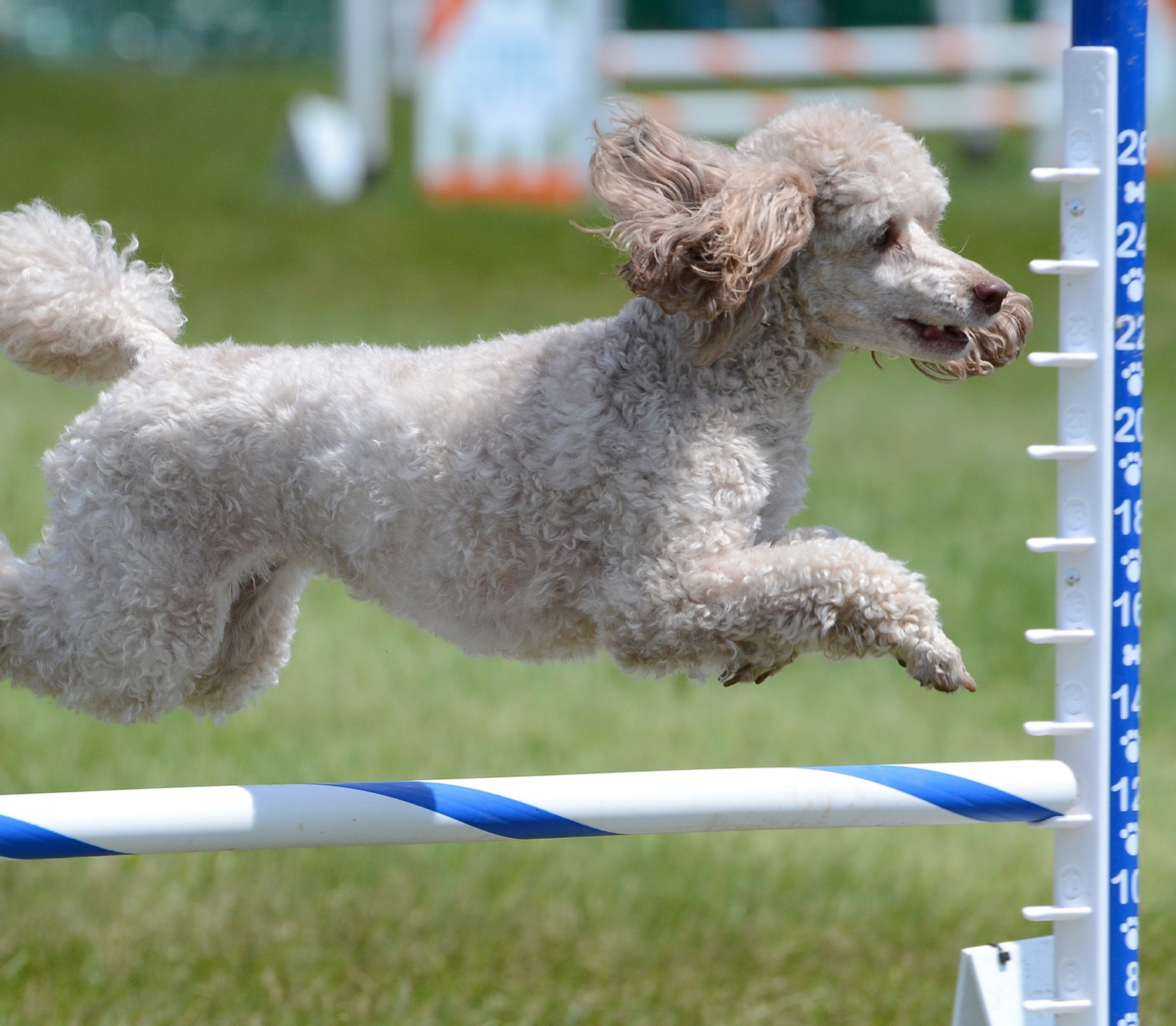10 dog sports to stay fit
You have an active dog and are sporty yourself? Then dog sports together is the "ultimate" for you and your pelt nose. Many different sports with your dog are waiting to be explored by you. To find out what you and your dog enjoy and in which area your talents lie dormant, you should simply try out a few ideas. Here we give you a small overview of 10 exciting dog sports that are guaranteed to be fun and increase the partnership between you and your dog.
Agility – with speed and skill through the course
The fast-paced dog sport of agility requires a lot of coordination, reaction and concentration from both humans and dogs. Perfect interaction requires a lot of training and discipline. The route to be mastered in the course consists of various obstacles such as slalom, hoops, tunnels, jumps and much more. In the tournament there are different performance classes (1-3, depending on the size of the dog). As the handler, you run alongside your dog and guide it through the course using only body language and sounds. The team that completes the course as quickly and as faultlessly as possible wins. Almost all breeds of dog are suitable for this sport, but you should make sure that the physical characteristics of your dog are also present. Especially large or small dogs, as well as overweight or sick dogs, should not take part in this sport due to the very high physical strain. Border Collies, Australian Shepherds, Poodles, Bearded Collies, German Shepherds and many other agile dogbreeds are particularly suitable.
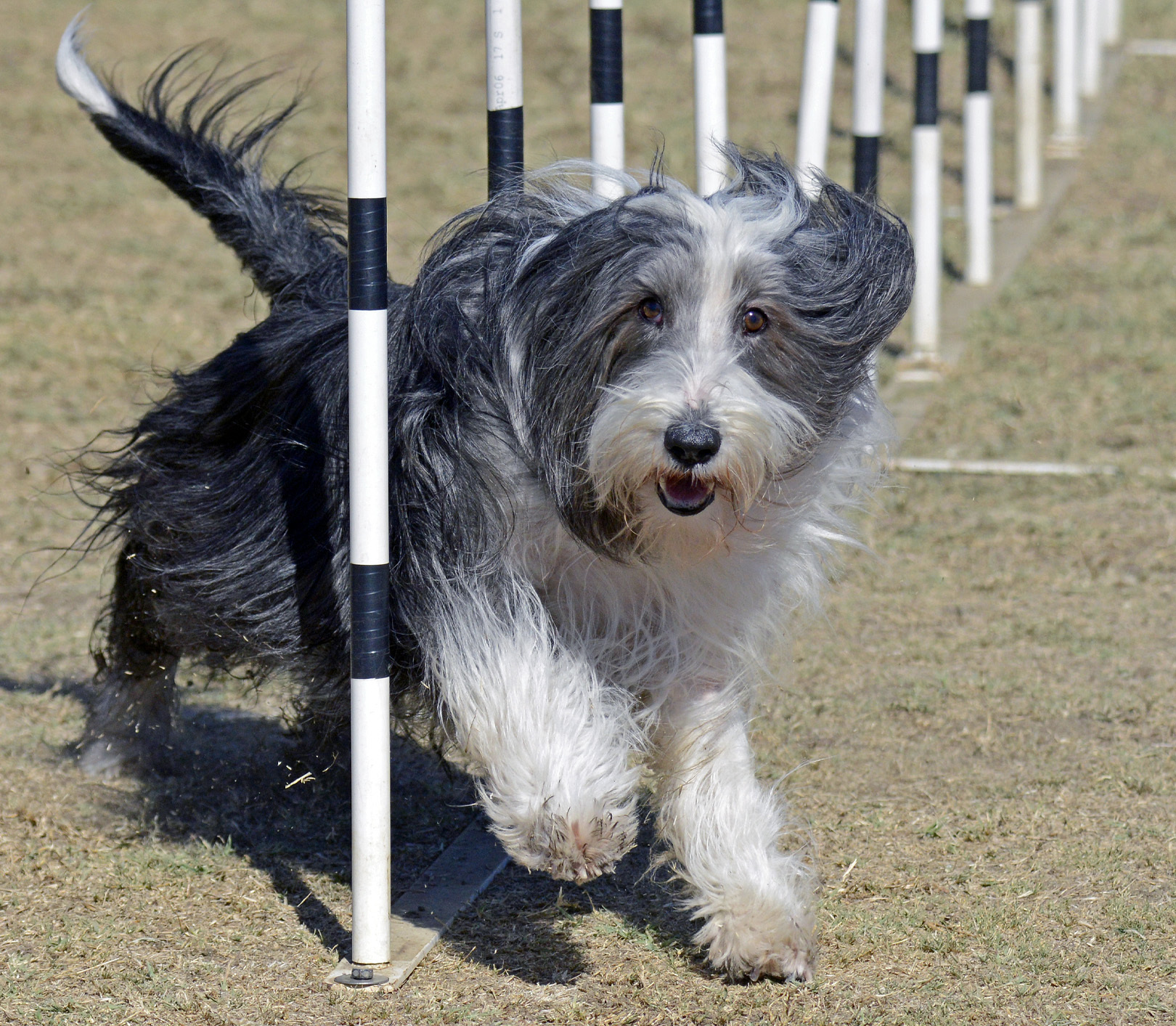
Dog Dancing – Dancing with the dog
Dog Dancing is now a recognised dog sport that is held at many tournaments. Challenging obedience exercises are combined with harmonious music. There are two types: "Heelwork to Music" and "Freestyle Dogdancing". In "Heelwork to Music", various given foot positions are combined by the human and the dog with rolls, jumps and turns. In "Freestyle Dogdancing" almost all obedience tasks are permitted, which are performed rhythmically and harmoniously to music. This demanding teamwork requires basic obedience as well as a lot of discipline and practice. You yourself should have a certain sense of rhythm. Almost all breeds of dog are suitable for this sport. You can easily adapt the programme according to your physical condition.
Dog Frisbee - for creative and bouncy dogs
In dog Frisbee, you let a special Frisbee fly to different distances. Your dog catches the Frisbee, ideally from flight, and brings it back to you. Your dog's preference for retrieving, reaction time, endurance and speed are prerequisites for this sport. In addition to distance Frisbee throwing, there is also a freestyle version. In freestyle Frisbee, the dog-human team presents a choreography over two minutes to suitable music. Up to seven Frisbees can be used for this. Due to the sometimes high jumps, the physical strain on the dog in this sport is very high. Very large, old, very young and physically limited dogs should not do this sport - conventional, adapted retrieve training is suitable for these dogs. Agile dog breeds such as Border Collies, Malinois and many terriers are well suited.
Flyball – fun for all ball junkies
Flyball is a creative and fast-paced sport for those who like to play with balls. A ball is shot out of the flyball box while the dog jumps over four hurdles, then catches the ball out of the air and runs back over the hurdles. When the dog crosses the finish line, the next dog sprints to catch the ball that is already flying. The "relay race" is played in two teams of four dogs and humans, who compete against each other on two parallel tracks. The dog does the sporting performance. The dog's owner gives the commands and cheers the team on. An affinity for retrieving balls, a willingness to run and social compatibility are the basic requirements for this fun sport.
Utility dog sport - the eventing test
Utility dog sport is the oldest dog sport and consists of tracking, obedience and protection.
In tracking, a distance of approx. 400-800 paces is followed. Up to three objects are to be recognised and indicated on this track.
The subordination work is about the exact and direct following of commands such as sit, down and stand commands from the movement as well as leash handling, free following and retrieving exercises.
In addition to balance and absolute obedience, nerves of steel, self-confidence and good resilience are basic requirements for a dog in protection service. The aim is to track down and apprehend an alleged criminal and prevent an attack or escape attempt.
Breeds with a strong character such as German Shepherd, Malinois, Beauceron, Doberman or Rottweiler are particularly suitable.
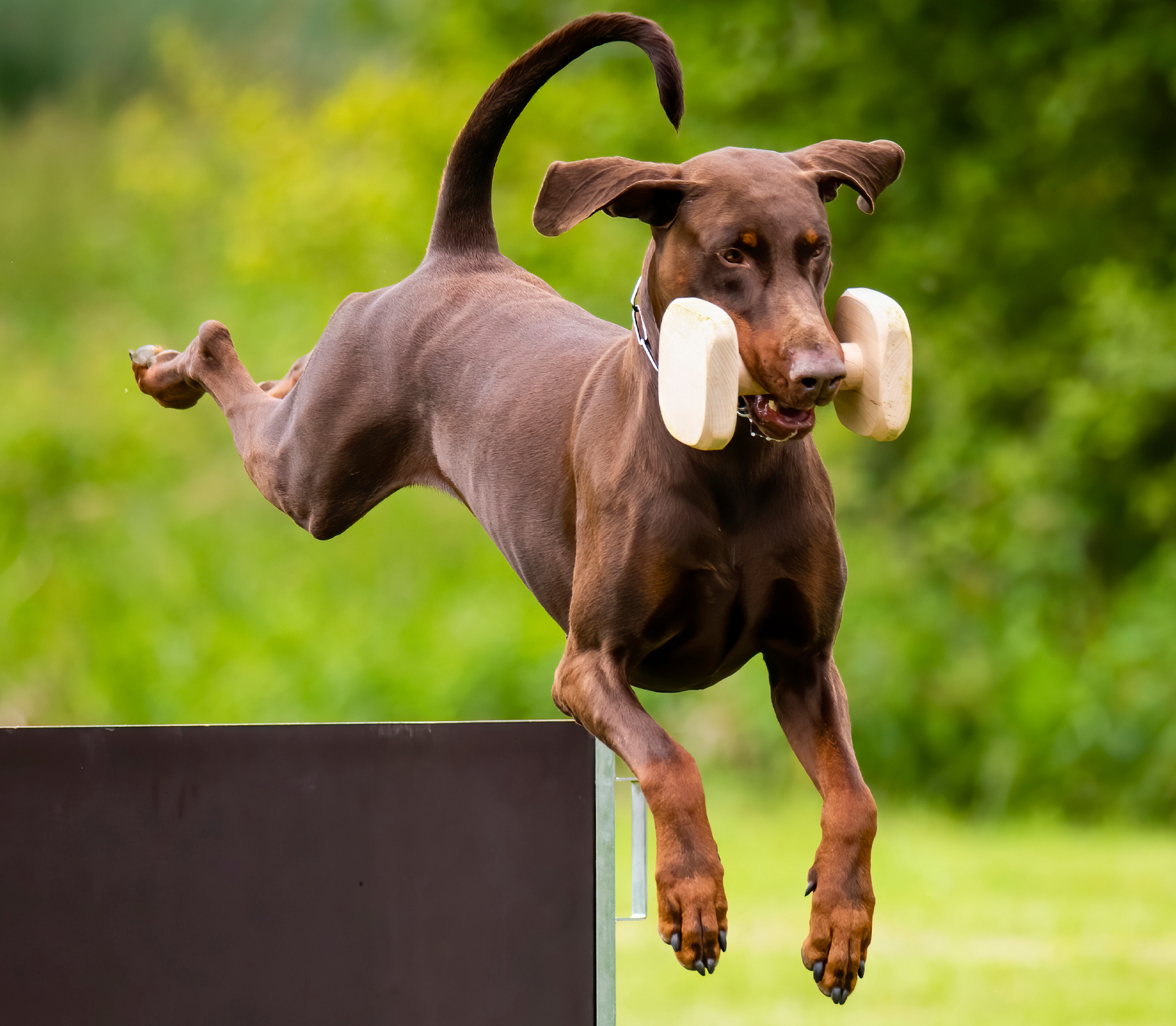
Mantrailing – Tracking missing persons
Apart from dog-human teams engaged in sports, mantrailing is mainly practised in the rescue dog and police dog sectors. Whether lost, buried or abducted - the aim here is to track down people who are considered missing. The dog orientates itself exclusively on the individual scent of the human body and can follow the scent even over a longer period of time and in difficult terrain. During training, the dog sniffs a scent carrier with the individual scent of the person to be searched for and then picks up the scent. Once the person has been found, the dog indicates this by, for example, sitting down or barking. A basic requirement for the dog owner is the exact knowledge of the behaviour of his own dog as well as the knowledge of the smelling behaviour of dogs in general. Since mantrailing serves as a natural exercise for family dogs, almost all breeds of dogs can practise this sport. However, the level of difficulty of the track should be adapted to the respective dog type. Especially dog breeds that like to hunt, such as sweat dogs, Labrador retrievers, Weimaraners or terriers, will have great fun with tracking work.
Obedience
A high willingness to work, joyful obedience and a precise, fast execution of commands in different situations are basic requirements for obedience.
In addition to mastering the basic commands without exception, this also includes retrieving different objects and obeying auditory and vocal signals from a greater distance. The dog must also be able to distinguish between different directions such as "left", "right" or "centre". Thus the handler sends his dog to different marking points where the dog exercises changing positions such as "sit", "down" or "stay". In the directional retrieve, the dog must retrieve the correct one from three differently arranged pieces of wood. In addition, the dog has to find an object that the owner has touched beforehand. Obedience is not the "high school" of obedience for nothing. An iron will and a lot of discipline from both dog and owner are required. In this dog sport, too, the fun and joy of performing the exercises should be the highest goal.
Treibball – great fun not only for herding dogs
The aim of Treibball is to drive various balls (ideally gymnastic balls), which are placed anywhere on a previously defined playing surface, through a goal in cooperation between the human and the dog. The size of the balls depends on the size of the dog. There can be up to eight balls on the playing field. The dog gradually drives all the balls through the goal in a controlled manner by nudging them with its nose or head. The dog owner supports the dog with calls and gestures. In order for the dog to know where to go, all commands, such as directions or pace, must be rehearsed beforehand. For more advanced human-dog teams, additional obstacles such as slaloms or tunnels can be added. There are no limits to creativity. There are only fixed rules in a competition that has been worked out beforehand. Great fun for all ball-crazy dogs - not only for Border Collie and Co.
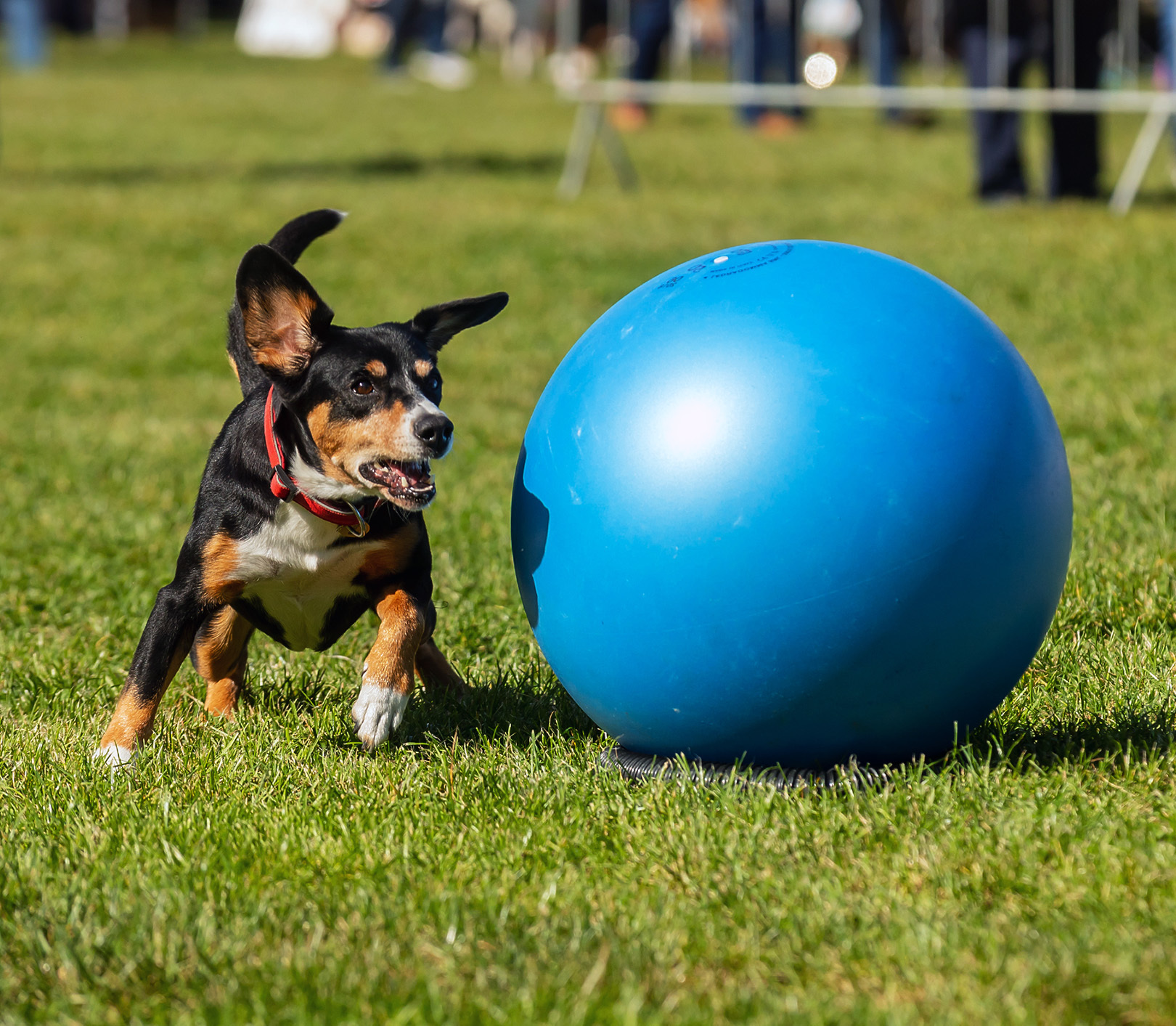
Tournament Dog Sports - Athletics for humans and dogs
Various dog sport disciplines must be completed quickly and as faultlessly as possible in the competition. These include the classic quadruple competition, CSC (Combination Speed Cup), an obstacle course and a cross-country run, which can also be a pulling dog discipline. It is compulsory to have passed a companion dog test beforehand.
The quadruple competition consists of an obedience test with elements from the companion dog test, a hurdle race, a slalom run and an obstacle course.
The Combination Speed Cup (CSC) is a team sport in which three human-dog teams compete together. The course consists of various obstacles, a slalom and turning poles. As in a relay race, the second team may only start when the first team has successfully completed the course and then the third team follows. The winner is the team whose teams were the fastest.
The obstacle course is an independent discipline in which the human-dog team has to overcome eight obstacles together over a distance of 75 metres. The winner is the fastest team that has made the fewest mistakes.
The cross-country race is staggered in different course lengths (from 1000 - 5000m). The course leads over different terrain. Man and dog run together as fast as possible. The dog must be kept on a leash. It is also possible to wear a belly belt system with a shock absorber and a panic hook, as is also common in canicross.
If you choose a discipline from the sport of pulling dogs, distances of up to 10,000 metres are possible. In addition to individual starts, mass starts, pursuit races and relay races are also permitted. Two draft dogs are allowed in canicross and dogscooter.
Pulling dog sport: CaniX-Run - CaniX-Bike - CaniX Scooter and Co.
The origin lies in skijoring, where skiers or sledders are pulled by a dog or horse. In canicross, however, you run independently with your dog as a team through different terrain. Ideally, your dog runs in front of you and keeps the leash pulled. You set the pace and direction with your commands. All you need is a special canicross harness for you and your dog, and an elastic pull line. Prerequisites for this sport are a pronounced willingness to run, good physical condition on both sides and basic obedience. The type of terrain and route will vary depending on your level of training. You should practise directional commands in advance on your walks. Particularly suitable dog breeds are various draft dogs such as huskies, but also Rhodesian Ridgebacks, Malinois, Labrador Retrievers and many other dog breeds that enjoy running.
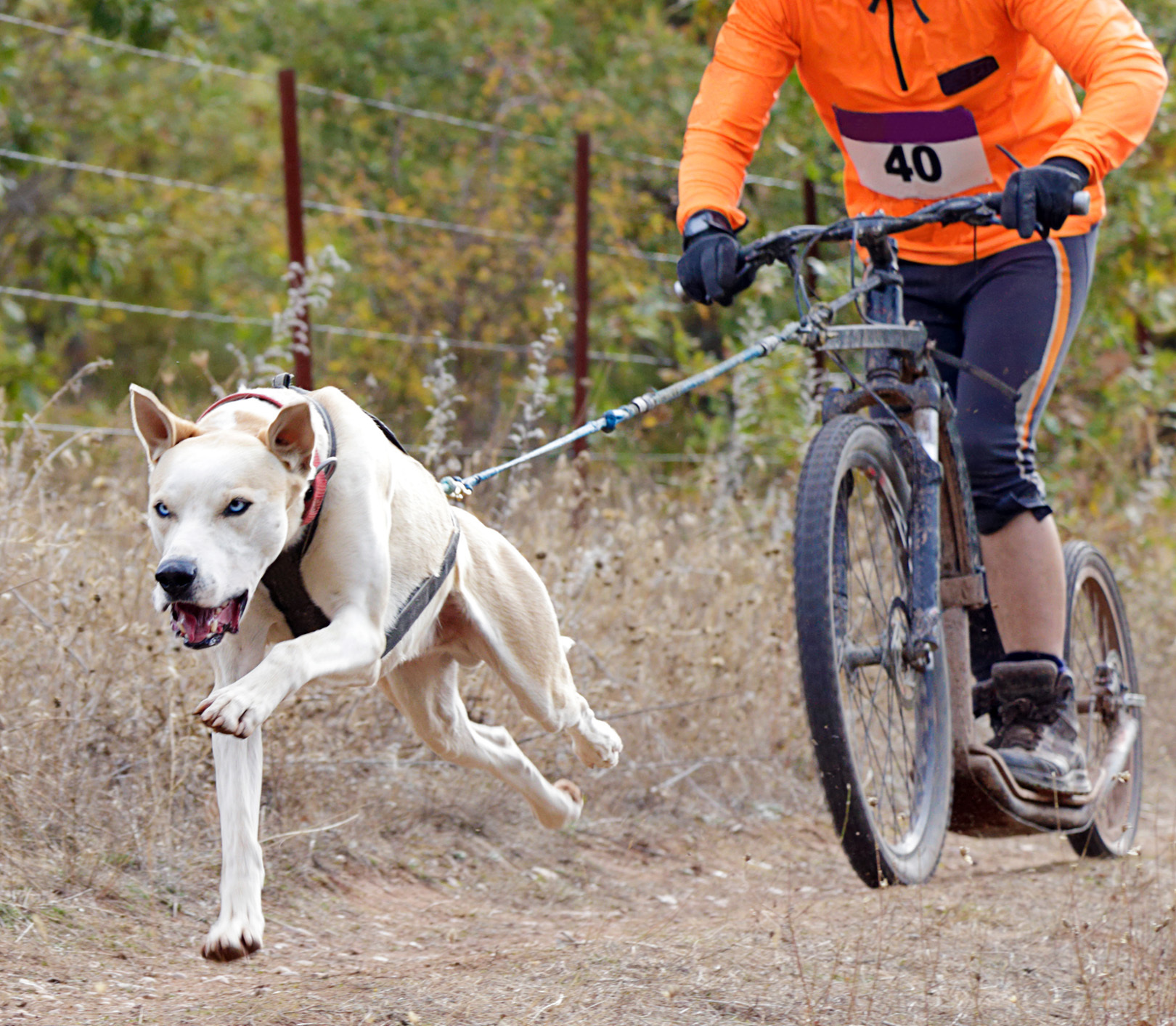
Important: For agile sports with particularly high physical stress, your dog should already be fully grown. You should only start training at an age of 12-18 months, depending on size. Physical fitness and mental condition should harmonise with the desired dog sport.
